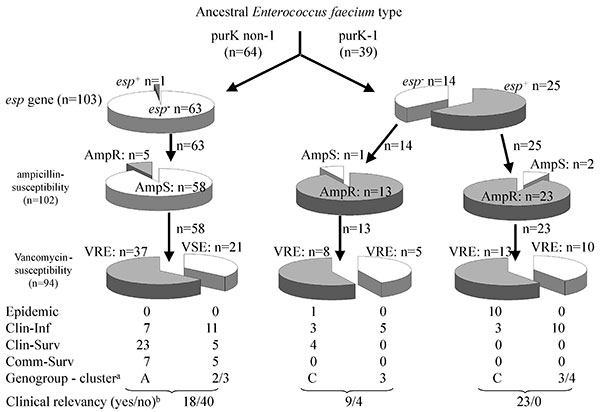Volume 9, Number 9—September 2003
Research
Epidemic and Nonepidemic Multidrug-Resistant Enterococcus faecium
Figure 3

Figure 3. Hypothetical evolutionary scheme for Enterococcus faecium genotypes and phenotypes from an ancestral E. faecium type. Open slices indicate esp-negative, ampicillin-susceptible, and vancomycin-susceptible. Closed slices indicate esp-positive, ampicillin-resistant, and vancomycin-resistant. Numbers indicate the number of strains. Arrows indicate the putative evolutionary direction. Clin-Inf, clinical infectious; Clin-Surv, clinical survey; Comm-Surv, community survey. a, dominant genogroup (A,C) for vancomycin-resistant enterococci and dominant cluster (2,3,4) for vancomycin-susceptible enterococci. b, clinical relevant strains (“yes”) are the total of epidemic and clinical infectious isolates, clinical nonrelevant strains (“no”) are the total of clinical and community survey isolates.